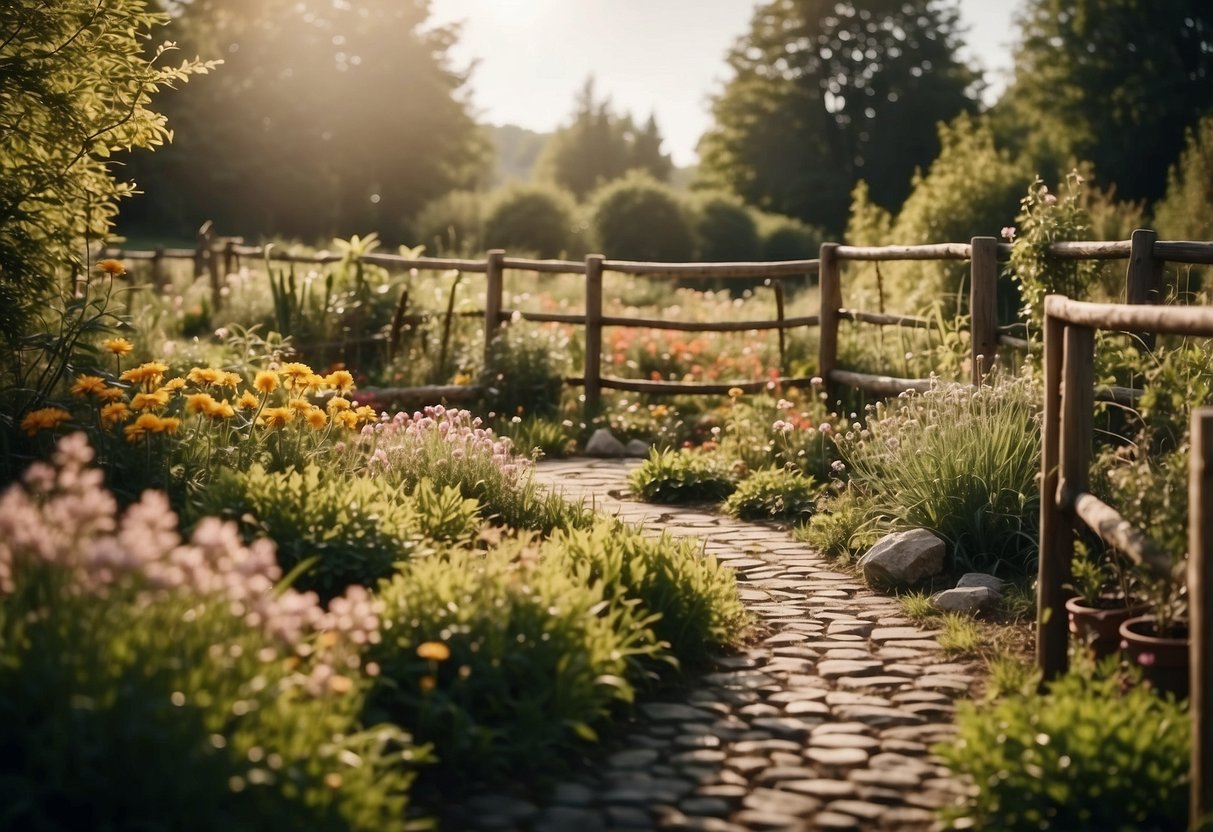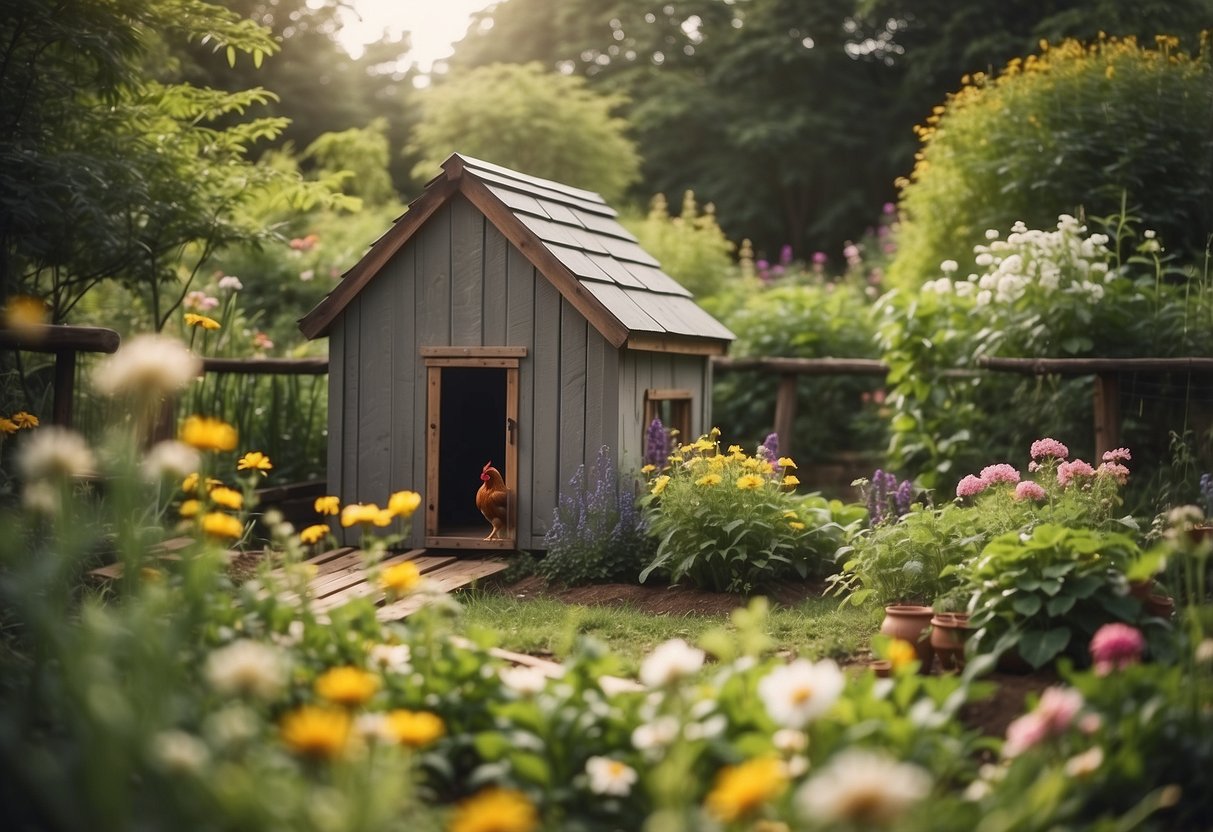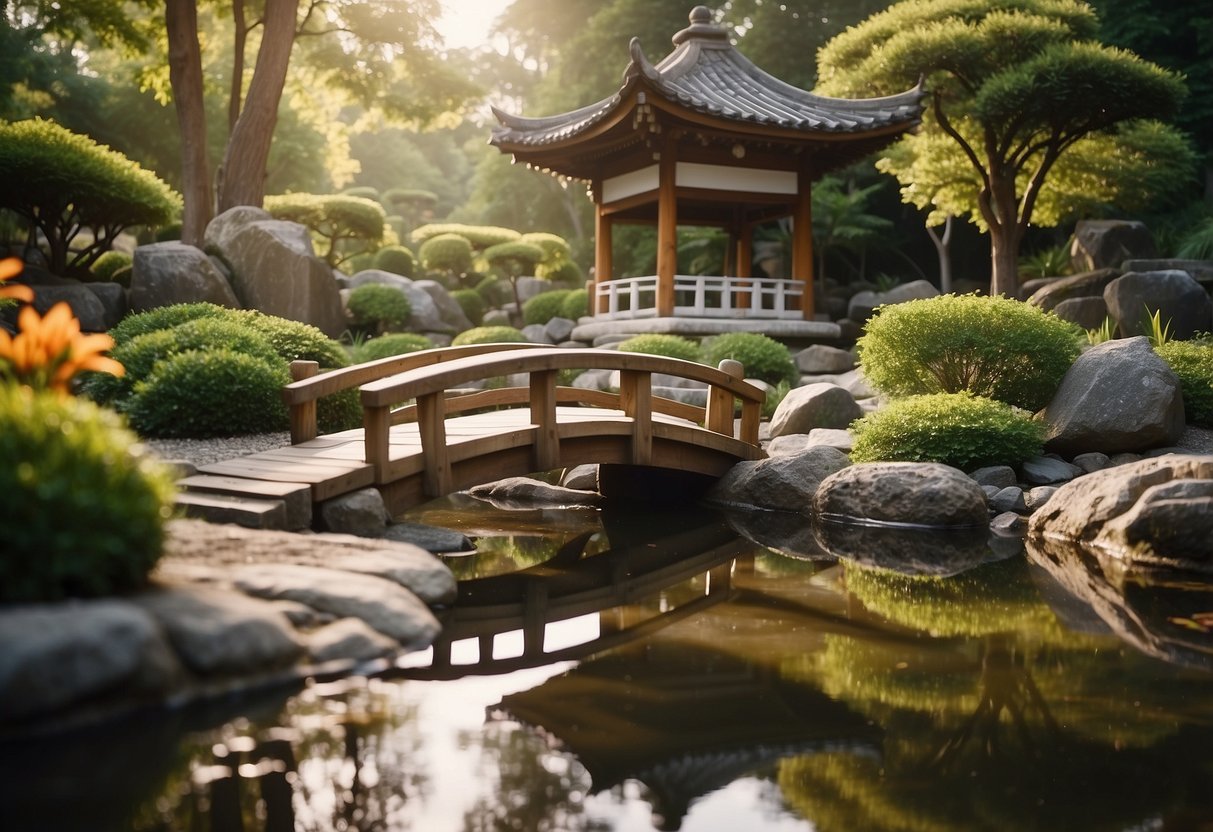Rural Property Garden Ideas: Transform Your Space into a Green Oasis
Creating a garden on your rural property can be a wonderful way to enhance its natural beauty and functionality. Whether you’re interested in growing vegetables, flowers, or simply creating a peaceful retreat, there are countless ways to design a space that suits your needs and tastes. A well-planned garden can turn your outdoor space into a delightful extension of your home.

In this article, we’ll explore various ideas to make the most of your rural garden. From simple landscaping techniques to creative planting solutions, you’ll find plenty of inspiration to transform your yard into a picturesque oasis. Get ready to make your rural property a slice of paradise.
1) Raised Bed Vegetable Garden

A raised bed vegetable garden is a great way to grow your own food. It can be built from wood, stone, or even recycled materials.
These gardens help improve soil drainage and make it easier to control weeds. They also allow for better soil customization.
You can find many ideas for raised beds, like using cedar boards for a simple yet effective garden bed. They are an excellent option for growing veggies and flowers without taking up too much space.
2) Wildflower Meadow

Creating a wildflower meadow on your rural property can add beautiful colors and attract beneficial pollinators like bees and butterflies. To start, choose a variety of wildflowers in different colors such as purple wild marjoram, blue field scabious, and red campion.
Planting wildflowers in full sun helps them grow better. Consider rolling out a wildflower strip to make the process easier. Once planted, allow the flowers to reseed and spread naturally, creating a stunning, ever-changing meadow.
3) Fruit Tree Orchard

A fruit tree orchard can be a wonderful addition to your rural property. Start by planning which types of fruit trees you want. Think about the fruits your family loves.
Next, consider the layout. Make sure trees have enough space to grow. It’s also crucial to have proper irrigation to keep your trees healthy.
Don’t forget to stake your saplings. This support helps young trees stay stable and grow strong roots. By setting up your orchard with care, you’ll enjoy delicious fruit for years to come.
4) Rustic Patio with Pergola

A rustic patio with a pergola offers a cozy and inviting outdoor space. You can use treated pine stained in a honey gold color to give your pergola a charming look.
Adding string lights or lanterns will enhance the ambiance, making your patio perfect for evening gatherings.
Consider using natural materials like stone or wood for the flooring and furniture to complete the rustic vibe.
Looking for design ideas? Check out these rustic patio photos for inspiration.
5) Pond with Water Lilies

A pond with water lilies can transform your rural garden into a serene retreat.
Water lilies are not only beautiful but also help maintain the pond’s ecosystem. They provide shade, reducing algae growth and keeping the water cool.
Choose a variety of water lily that suits smaller ponds like the dwarf Nymphaea Aurora for a stunning effect.
6) Chicken Coop with Run

A chicken coop with a run can be a great addition to your rural garden. Not only do you get fresh eggs, but the chickens also help keep pests under control.
When building a coop, make sure it has plenty of ventilation and easy access to nesting boxes. Adding a run gives your chickens extra space to roam safely.
Consider a paddock system where you rotate the chickens through different areas. This keeps the grass healthy and prevents overgrazing. Plus, the chickens will love the variety!
7) Herb Spiral

A herb spiral is a unique and efficient way to grow your favorite herbs. It uses a spiral shape to maximize vertical and horizontal space, making it perfect for small gardens.
You can build a herb spiral from materials like stone or wood, which adds a rustic charm to your garden. Each level of the spiral can have different growing conditions, which is great for planting various types of herbs.
Consider adding a small pond at the bottom of the spiral. This feature not only enhances the look but also helps in managing moisture levels for certain herbs. For more details, you can check out how to build a herb spiral.
8) Peaceful Zen Garden

Transform your rural property into a tranquil haven with a peaceful Zen garden. Start with the essentials: raked gravel, stones, and bamboo.
Consider adding a water feature. The sound of flowing water can create a soothing atmosphere. Surround it with pebbles to enhance the look.
You can also create bamboo bliss by incorporating bamboo plants or fencing. The gentle rustling of leaves can add to the calm.
9) Compost Bin Area

Creating a compost bin area in your rural garden is a smart way to recycle kitchen and yard waste. It helps to enrich your soil with nutrients.
You can start with a simple worm bin using just a couple of 5-gallon buckets. This is perfect if you have limited space.
Another idea is using straw bales to form a compost bin. Arrange them in a square shape with an open center to toss in your scraps.
A compost bin from plastic storage containers can also be efficient. It’s easy to make and helps collect “compost tea” for fertilizing your garden.
10) Sunflower Border

Adding a sunflower border to your rural property garden can create a stunning visual impact. These vibrant flowers serve as a natural fence and attract pollinators like bees and butterflies.
Dwarf sunflowers are a great option for borders since they grow between 12-18 inches tall. This makes them easy to manage while still adding a pop of color.
Consider planting sunflower seeds in a straight line along the edge of your garden. Make sure they get plenty of sunlight and water regularly for the best bloom.
For more ideas on sunflower gardens, check out these easy sunflower garden ideas and backyard sunflower garden ideas.
Choosing The Right Plants

Selecting the right plants for your rural property garden can enhance its beauty and ease maintenance. Focus on the local climate, soil type, and choosing perennials that require minimal care.
Consider Climate And Soil
When choosing plants, the climate of your area is crucial. Plants that thrive in your local weather conditions are more likely to flourish. For example, if you live in an area with hot summers and mild winters, consider planting lavender, which is heat-tolerant and resilient.
Soil type affects plant health, too. Test your soil to determine if it is sandy, clay, or loamy, as different plants prefer different soil types. Sandy soil drains quickly, making it suitable for drought-tolerant plants. Clay soil holds moisture longer, which benefits plants requiring consistent hydration.
Native plants are often the best choice since they are well-adapted to your area’s climate and soil. They need less water and fertilizer and can resist local pests and diseases. Examples include local grasses, wildflowers, and shrubs, which can thrive with minimal intervention.
Low-Maintenance Perennials
Perennial plants return year after year, reducing the need for replanting. Low-maintenance perennials are ideal for those who want a beautiful garden without spending too much time on upkeep.
Consider planting coneflowers and black-eyed Susans, which are hardy and require little water. These plants also attract pollinators like bees and butterflies, encouraging a healthy garden ecosystem.
Evergreens are another great choice as they provide year-round greenery. Varieties like juniper or boxwood demand minimal pruning and are resistant to pests.
Herb gardens can also be practical and charming. Plants like rosemary, thyme, and sage are not only useful in the kitchen but also need minimal attention. They thrive in full sun and well-drained soil, making them perfect for busy gardeners.
Designing Your Garden Layout

Designing your garden layout involves careful planning to create pathways, use natural features, and add water elements. These components are essential for a functional and beautiful rural garden.
Creating Pathways
Pathways guide you through your garden, making it easy to access different areas. Use materials like gravel, stone, or wood chips for a natural look. Think about the width—make sure it’s wide enough for wheelbarrows if needed. Curved paths with gentle turns can give a relaxed, inviting feel.
Consider adding edging with plants or stones to keep pathways neat. Pathways can also create pockets for planting, breaking up large spaces into manageable sections.
Lighting along your paths helps you enjoy the garden in the evening. Small solar lights or lanterns work well.
Utilizing Natural Features
Natural features like trees, rocks, and slopes are invaluable. They add character and reduce the need for artificial structures. Large trees can create shaded spots perfect for seating or planting shade-loving plants.
Slopes can become terraced gardens, which help prevent erosion. Use rocks and boulders to frame flower beds or create focal points.
If your property has a natural stream or pond, build around it. Plant moisture-loving plants like ferns or hostas nearby. This connects the garden to its surroundings, making it feel harmonious and part of the landscape.
Incorporating Water Elements
Water elements like ponds, fountains, or small streams add movement and sound. They attract wildlife, such as birds and butterflies, making your garden more lively. A small pond can be a focal point with water lilies and fish.
Fountains come in various sizes and styles—match them to your garden’s theme. They can be standalone or part of a pond.
Even simple birdbaths provide a refreshing touch. Place water features where they are visible from seating areas or windows. Ensure they fit naturally within the garden without overpowering the space.
Sustainable Gardening Practices

Implementing sustainable gardening practices can greatly benefit your rural garden. Key methods include composting to reduce waste, harvesting rainwater to save resources, and using eco-friendly pest control methods.
Composting Techniques
Composting is an excellent way to recycle organic waste and create nutrient-rich soil for your garden. You can start by collecting kitchen scraps like vegetable peels, coffee grounds, and eggshells. Combine these with yard waste such as grass clippings and leaves.
It’s important to maintain the right balance of “greens” (nitrogen-rich materials) and “browns” (carbon-rich materials). Turn your compost pile regularly to aerate it and speed up decomposition. Over time, this will break down into a dark, crumbly material that you can use to enrich your garden soil.
Rainwater Harvesting
Collecting rainwater is a smart way to conserve water and provide your garden with a free, sustainable water source. You can set up a rain barrel or a larger system that captures rainwater from your roof. Make sure your collection container is covered to prevent mosquito breeding.
Use the collected rainwater to irrigate your plants during dry periods. This helps reduce the strain on local water supplies and ensures your garden gets the hydration it needs without the need for treated tap water.
Eco-Friendly Pest Control
Avoiding synthetic pesticides is crucial for maintaining a healthy garden ecosystem. Instead, opt for natural pest control methods. Introduce beneficial insects like ladybugs and predatory beetles, which can help keep harmful pests in check.
Additionally, you can use homemade sprays made from ingredients such as garlic, neem oil, and soap to repel insects. Physical barriers like row covers and traps can also be effective. These methods protect your plants without harming the environment or beneficial insects.







